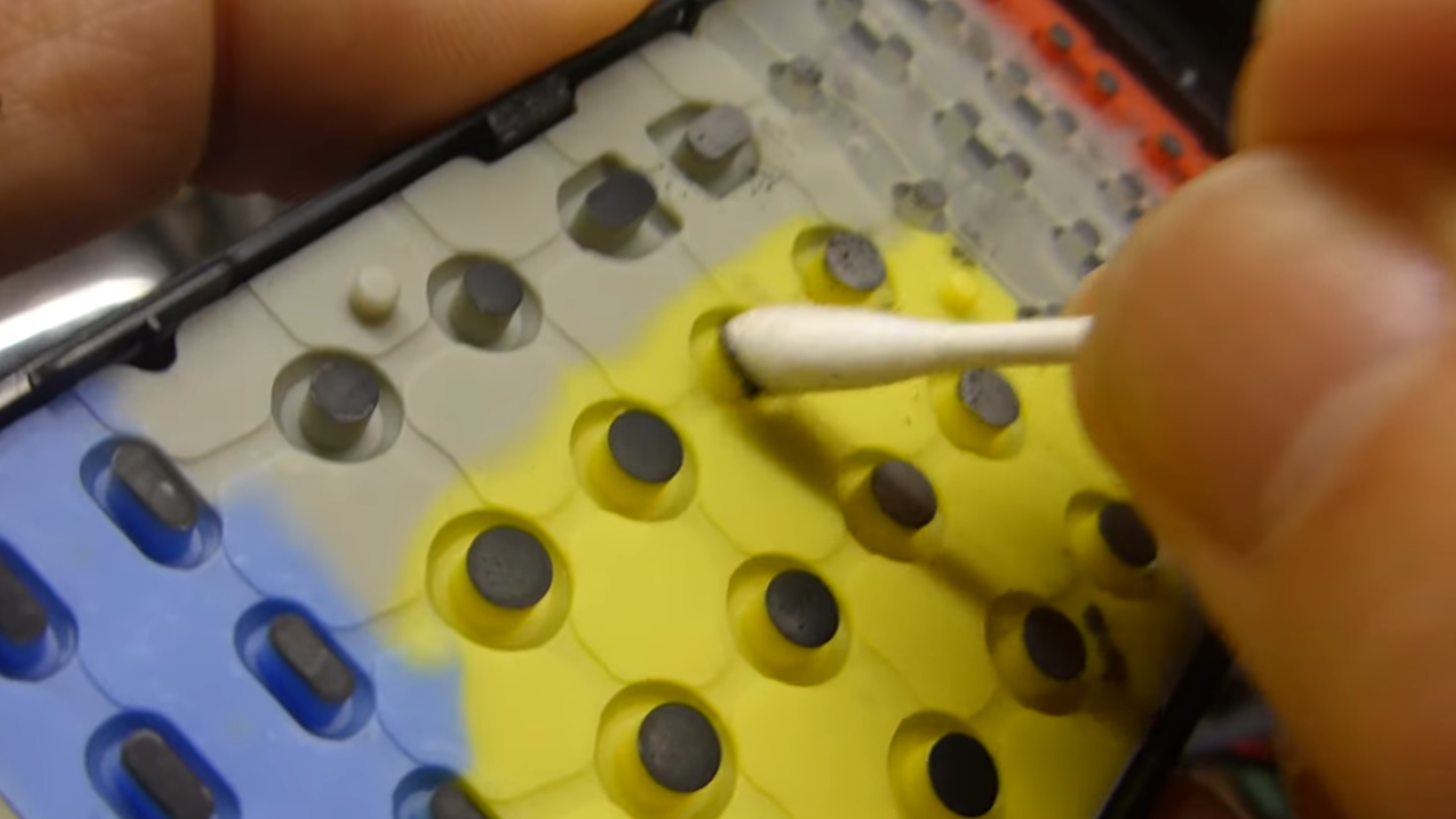- cross-posted to:
- hackaday@rss.ponder.cat
- cross-posted to:
- hackaday@rss.ponder.cat
Surprisingly, the youtube comments contain useful information, too.
This comment from PaulG.x caught my eye:
Electronics technician with 48 years in the industry here.
The common cause of the buttons losing sensitivity is that the silicone absorbs skin oils and these oils act as insulation on the pads and tracks.
If you look at the tracks under the pads that are least sensitive , you will see the oily residue. You can clean the tracks and pads with alcohol for a short term fix but the pads will exude more of the oil that is within the silicone.
A longer term fix is to soak the whole key pad sheet in Fuelite (Petroleum Spirit) Fuelite is the main ingredient in CRC Contact Cleaner (in fact it is the only ingredient). Use liquid Fuelite to do this , not Contact Cleaner because you have to immerse the silicone sheet.
Soak the sheet for 5 minutes , it will swell a little , let it dry thoroughly and it will return to normal dimension.
While the silicone has still some absorbed Fuelite in it , it will be easily torn so treat it carefully.
Then reassemble the device.
This fix should last several months depending on the state of the silicone sheet
This is the way.
I always cleaned the silicone pads with warm water and soap, though. Just put them in the sink, apply water and soap, and use a brush to clean it. Dry it up with a paper towel and slap it a few times on the counter to get the water out of any cracks.
If you don’t want to have to clean it at all, don’t hold the remote in your hand all day. Condensation will happen.
Also, remotes of smokers are nasty, but soap and water works like a charm here as well.
Use Isopropyl for the electronics. Don’t use thinner or anything aggressive. It will just desintegrate the contacts.
As soon as you have to fix the contacts, it’s usually better to get a replacement. But if you clean your remote once you have to press harder, the contacts will survive. It’s usually from pressing too hard because the contact is bad from dirt.
If you have trouble opening it, twist the remote a bit until it opens or you get enough space between the top and bottom to insert a preying tool.
Watch for eventual screws under labels or in the battery compartment first.
A longer term fix is to soak the whole key pad sheet in Fuelite (Petroleum Spirit)
Dummy here. Reads to me as a regional brand name and an ambiguous generic term. Would soaking in naphtha work?
A quick search for the mentioned product names found their safety data sheets:
https://www.crcindustries.com/media/msdsen/msds_en-1003333.pdf
Chemical name Common name and synonyms CAS number % 1,1,1,2-tetrafluoroethane HFC-134A 811-97-2 45 - 55 1,1,2,2-tetrafluoro-1-(2,2,2-trifluoroethoxy) ethane HFE-347PCF2 406-78-0 45 - 55 https://www.tmkpackers.co.nz/wp-content/uploads/FUELITE-TMK-SDS-ISSUE-6.pdf
Chemical Ingredient CAS No. Proportion (% ) Heptane and isomers mixture 35 - 55 Cyclohexane 110-82-7 25 – 35 Methylcyclohexane 108-87-2 < 15 Hexane 110-54-3 <10
Good catch! The POG is always in the comments.
Happens a lot with car rke fobs, I usually have to replace the housings and buttons all together for a permanent fix. I tried the super glue and aluminum foil method and it temporarily works. Nothing I used to attach the aluminum to the worn button pad really results in a long term fix though (super glue, silicone, epoxy, hot glue). Is this a better solution?
The only method that has worked okay for me is using a scalpel to cut off a layer of the silicone from the defective part, and getting a donor pad from another remote to glue it on.
There isn’t much room for error though.
My go to is a pink pencil eraser. Hit the pad and the contact both then blow away the eraser residue.




